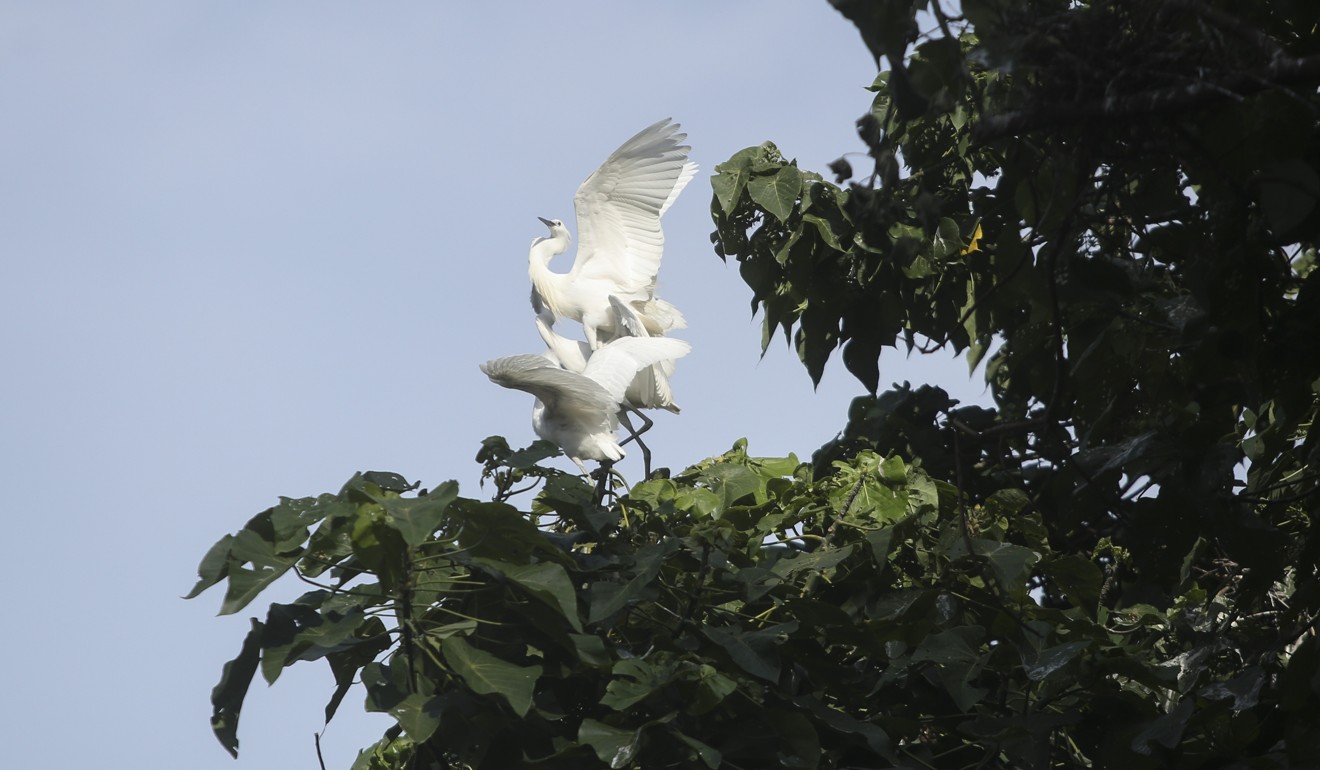
Tree-pruning blunder that killed 21 baby egrets in Hong Kong could have been prevented by official licensing scheme
Trained arborist and Institute of Horticulture Science member says such a scheme would have meant someone with proper professional training would have visited site
Many of the birds, including hatchlings, were still being treated for broken bones, feather and tissue damage, as well as hunger and dehydration after being separated from their parents during the breeding season.
Last Thursday, the Kadoorie Farm and Botanic Garden began releasing some of the rescued birds back into the wild.
The Leisure and Cultural Services Department, which was responsible for the works and later apologised for the blunder, promised an investigation into the matter. However, questions were raised as to whether anyone would be held accountable.
Trained arborist and Institute of Horticulture Science member Lam Tak-chak said that if a licensing scheme had been in place “someone with the proper professional training would have visited the site, recognised that there were birds nesting there, gone back to the department, and told them it couldn’t be done until the breeding season was over”.
The department carried out the pruning following a request in late May from the Food and Environmental Hygiene Department stating that overgrown tree branches were threatening public safety.

Lam is one of the city’s 60 arborists to be certified under the Institute of Landscape Architect’s accredited arboricultural practitioners’ (AAP) scheme – one of the strictest local certifications, in the absence of a consolidated government-recognised scheme.
The scheme requires arborists to be familiar with areas ranging from tree recognition and occupational safety to country park terrain, town planning and wildlife laws.
Lam said the problem in Hong Kong was that there were too many so-called arborist qualifications that could be obtained but not officially recognised by the government. This meant anyone could claim to be “qualified” and bid for a tree pruning job.
The lack of qualified managers meant frontline tree workers, whom Lam said also lacked proper knowledge, would only do what they were told.
“I can tell you that no one will be held accountable in this incident,” he said, referring to the slim chance of frontline workers being taken to task given the minimal qualifications the department set for tree work. “Many don’t even have a certificate in operating a chainsaw.”
The Agriculture, Fisheries and Conservation Department said it was investigating the incident. It is illegal in Hong Kong to disturb or injure wild birds or destroy their nests and eggs.

The LCSD insisted the site had been inspected by “qualified arboricultural staff” and that it had been “taking serious steps to investigate” the blunder.
But Lam questioned the department’s definition of “qualified”.
What we need is a registry for qualified arborists for Hong Kong
About 1,200 individuals in Hong Kong possess “certified arborist” credentials offered by the International Society of Arboriculture, which is based in the United States.
Patrick Lau Hing-tat, a member of the government’s Urban Forestry Advisory Panel and a former Institute of Horticulture Science chairman, said merely possessing the credentials did not guarantee adequacy.
“It’s not localised for Hong Kong conditions,” he said. “It’s sort of like a TOEFL test for trees,” referring to the worldwide English-language test for non-native speakers.
“Their training does not include things like local wildlife assessments or understanding the relevant local ordinances and laws. What we need is a registry for qualified arborists for Hong Kong.”
Lau suggested the government officially recognise the AAP scheme, which was put in place by the statutory body to professionalise the trade, similar to how doctors, lawyers, engineers and landscapists are self-regulated under their own respective institutes.
Kadoorie Farm urged officials to review procedures for roadside pruning and for LCSD to improve its supervision of workers to ensure wildlife is not harmed.

